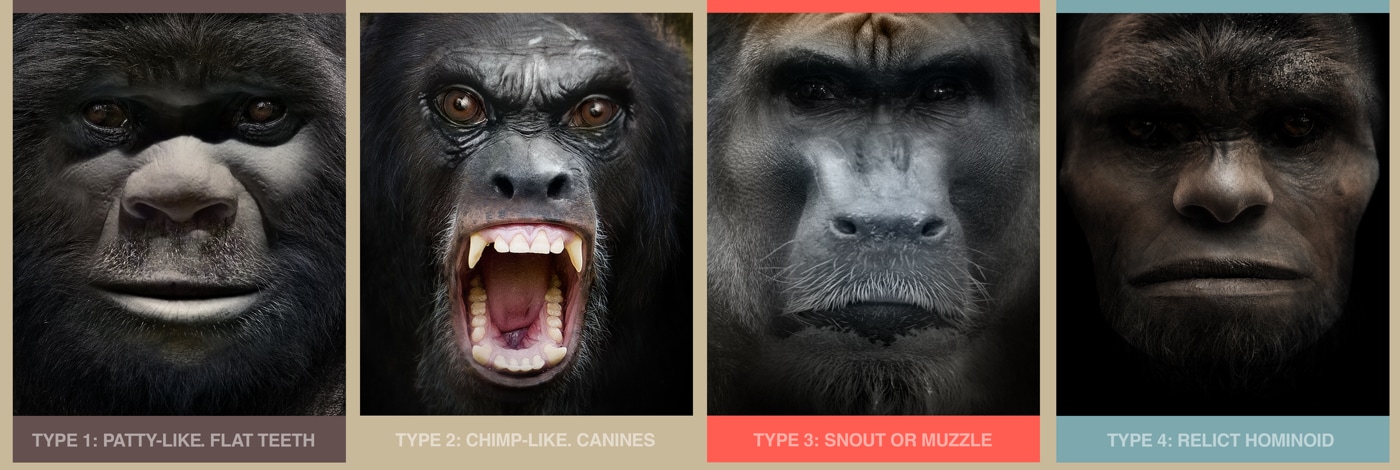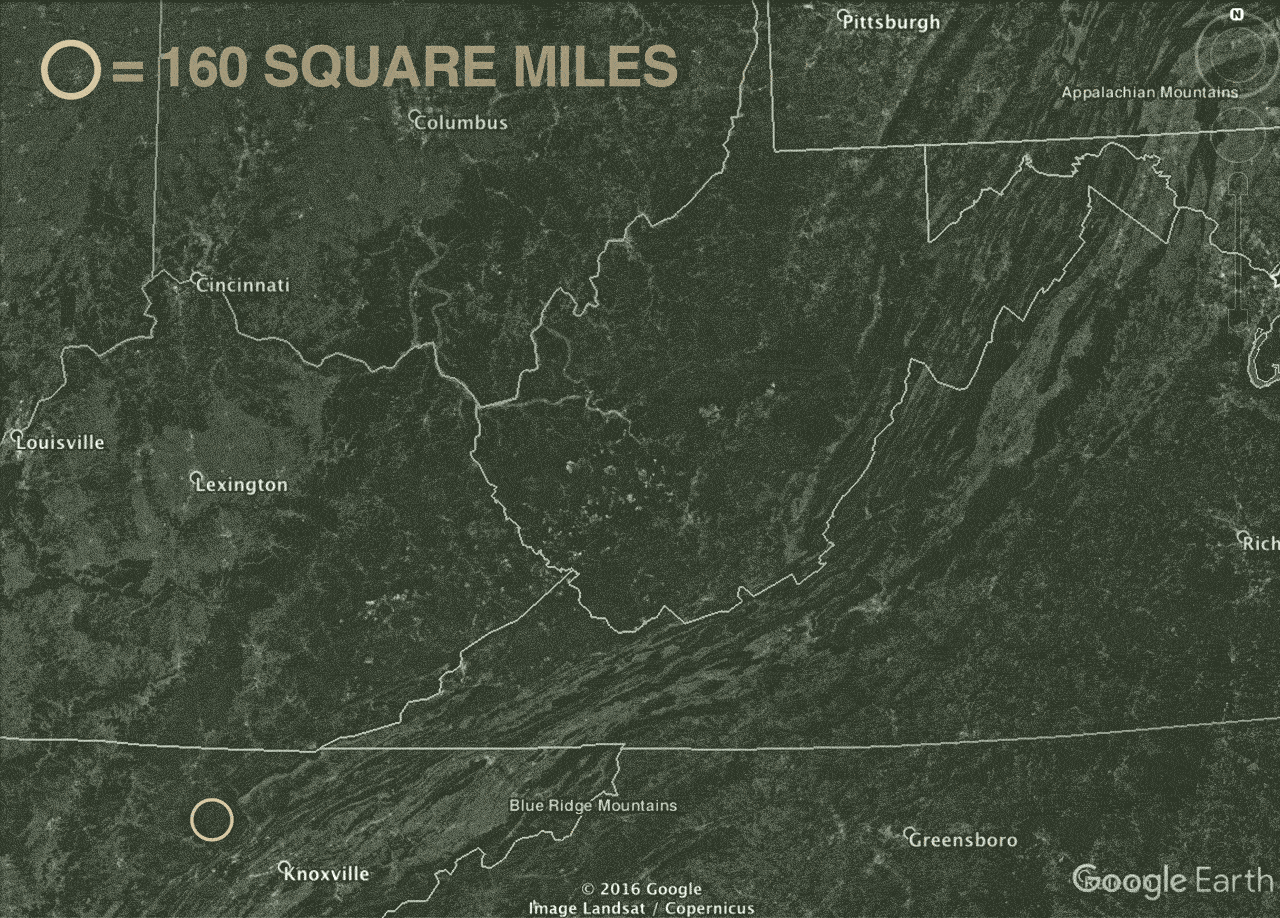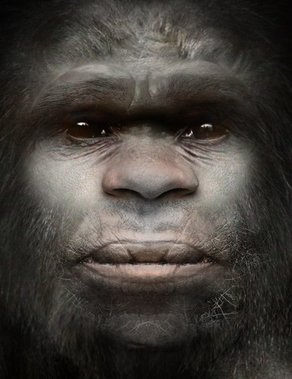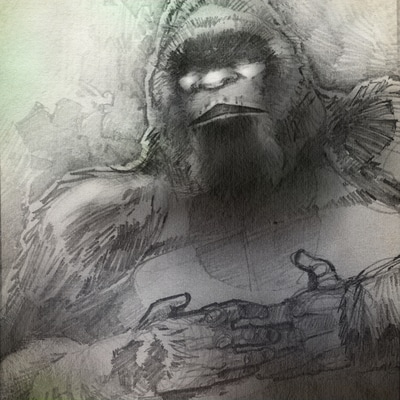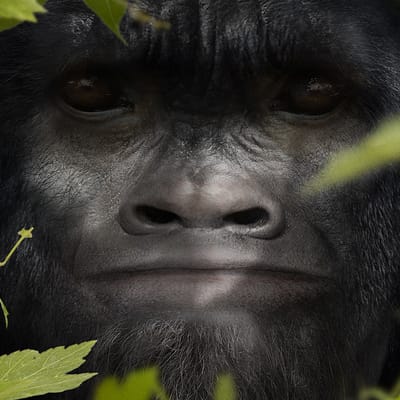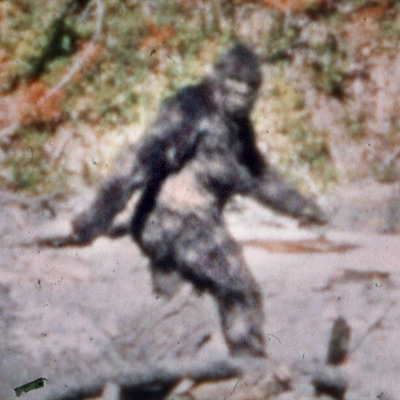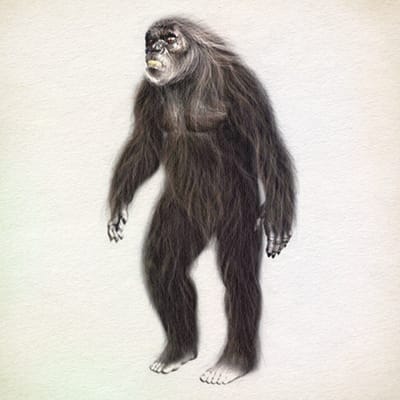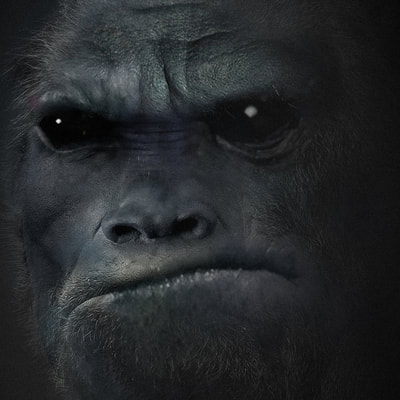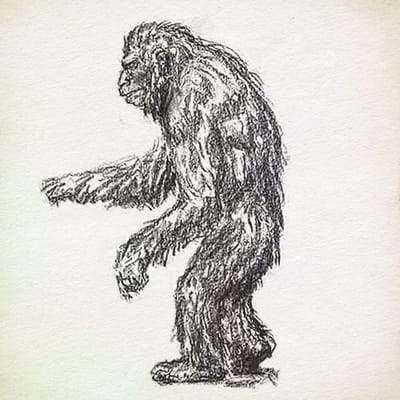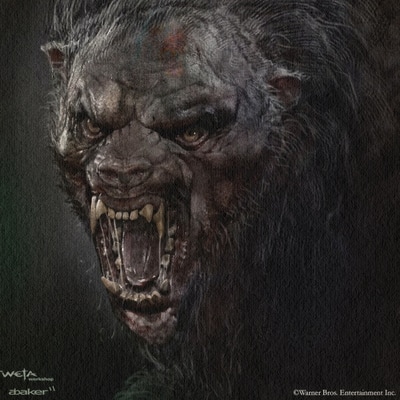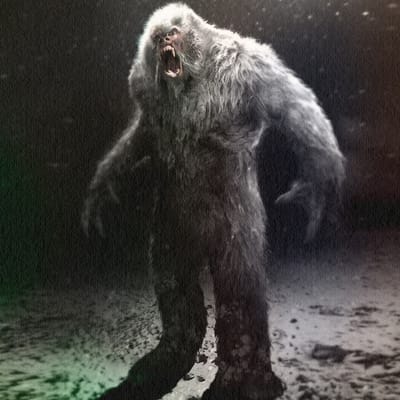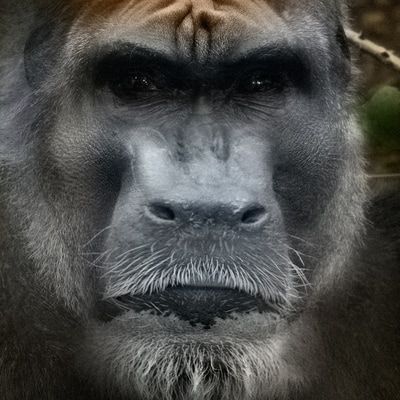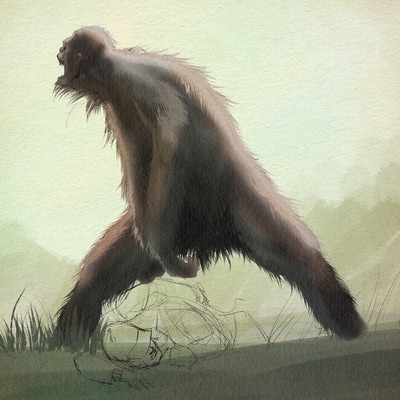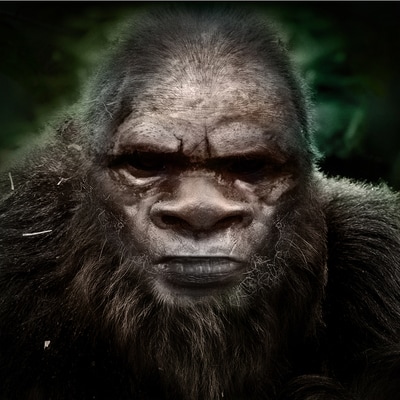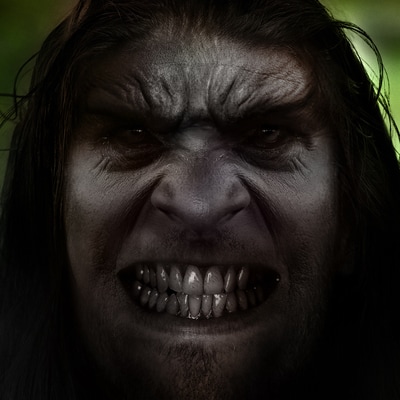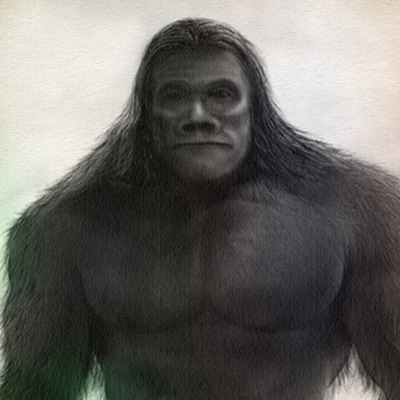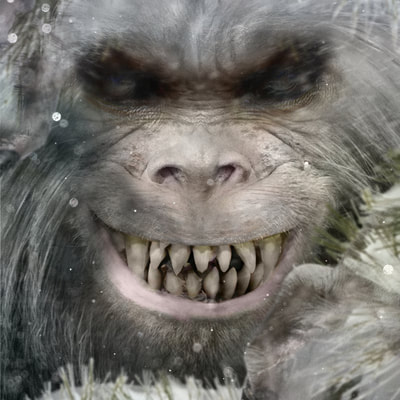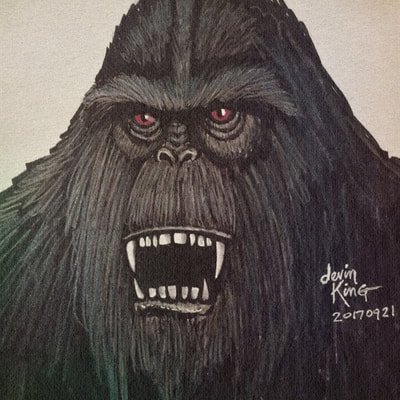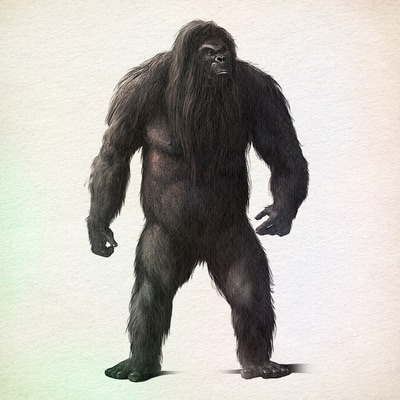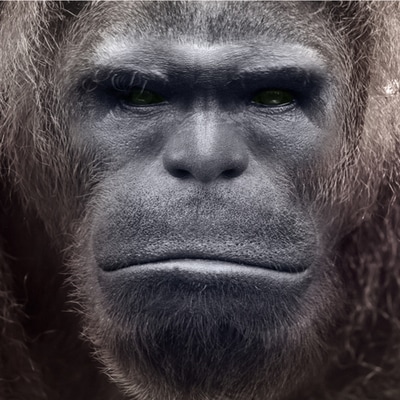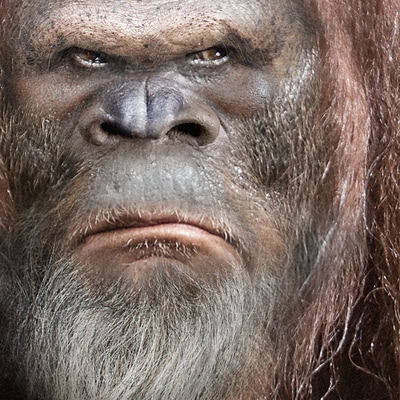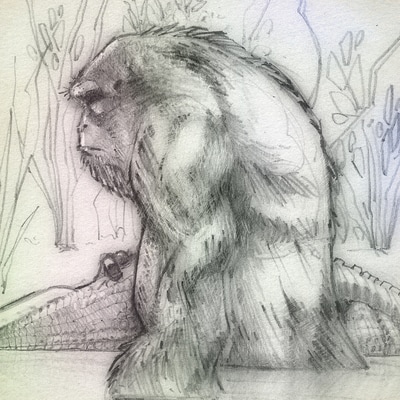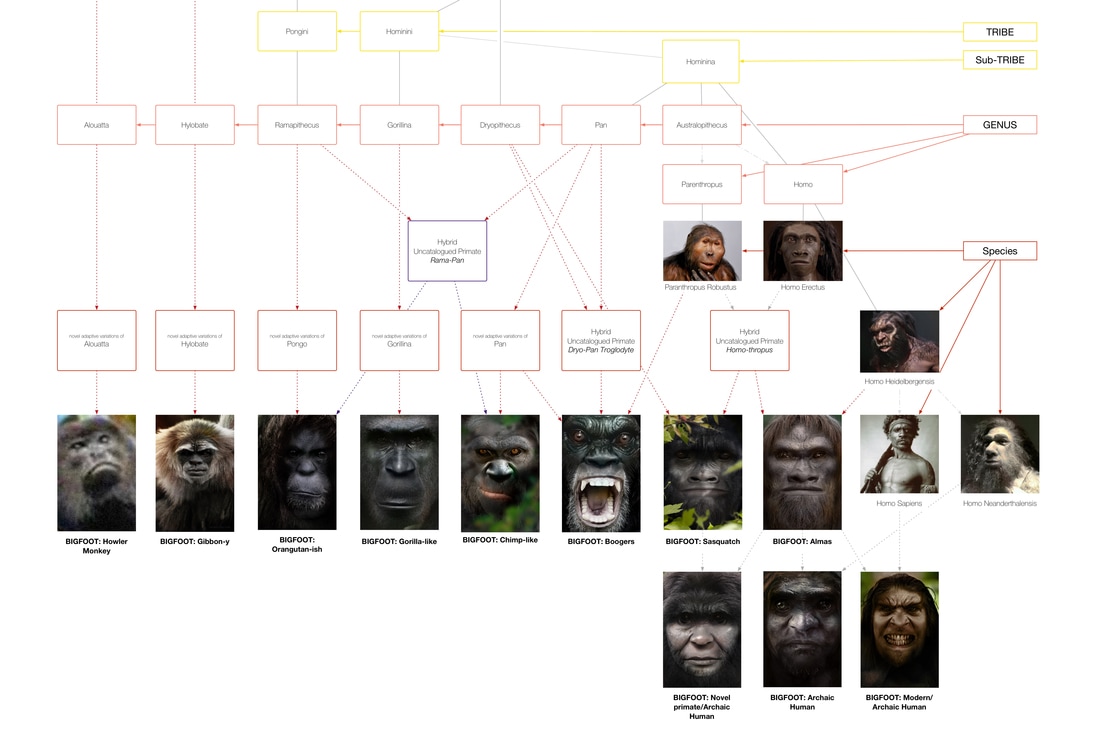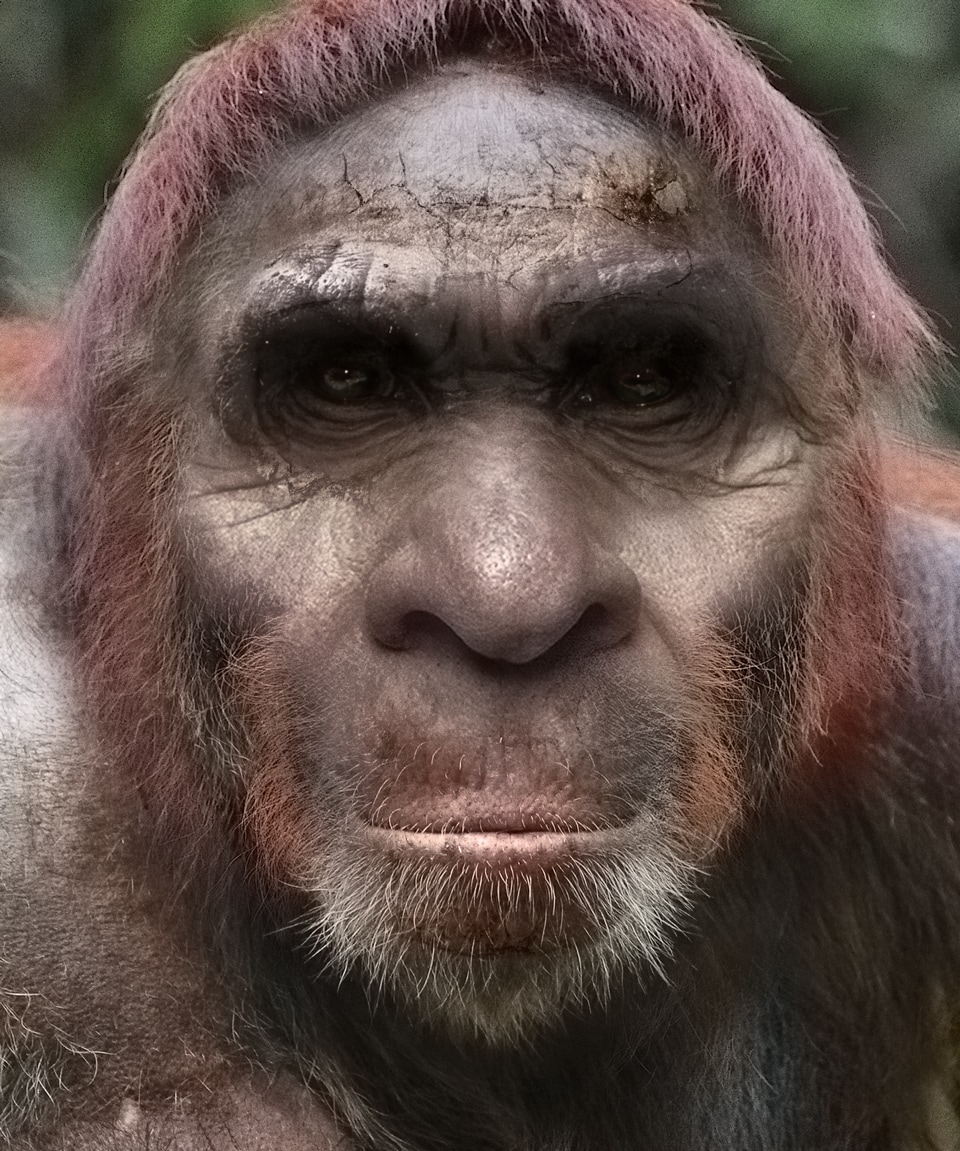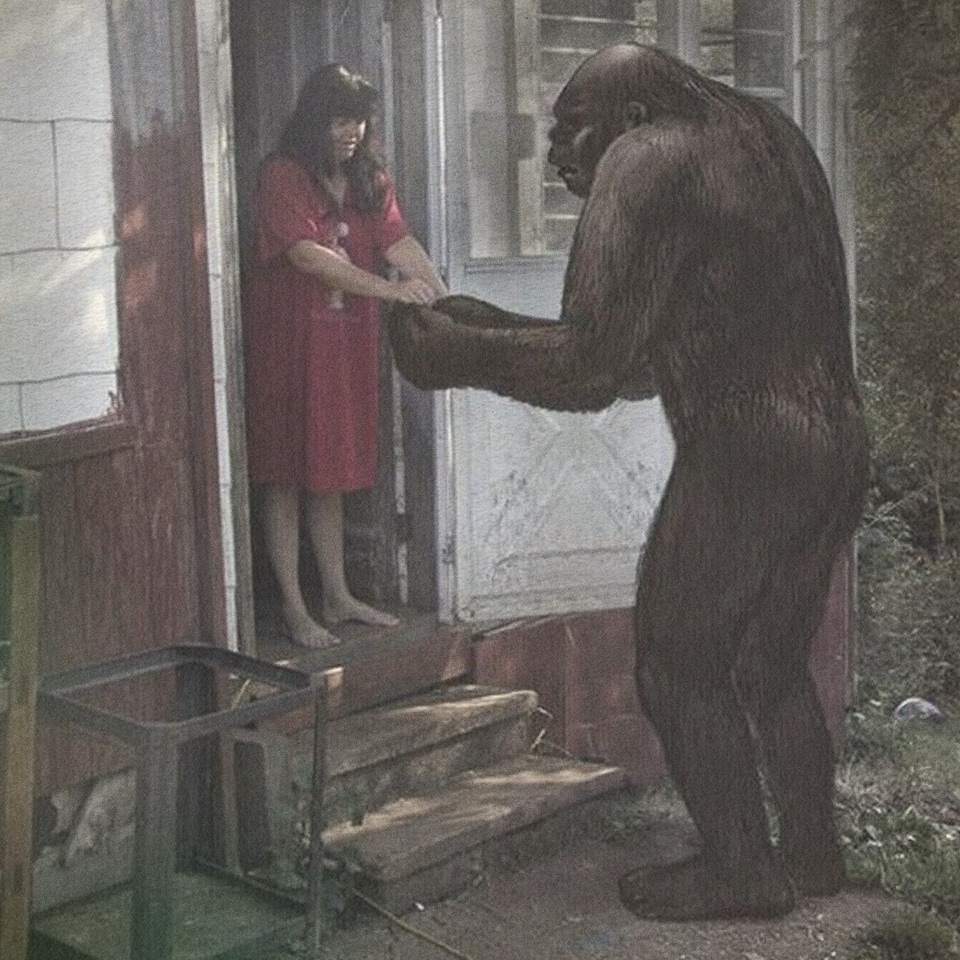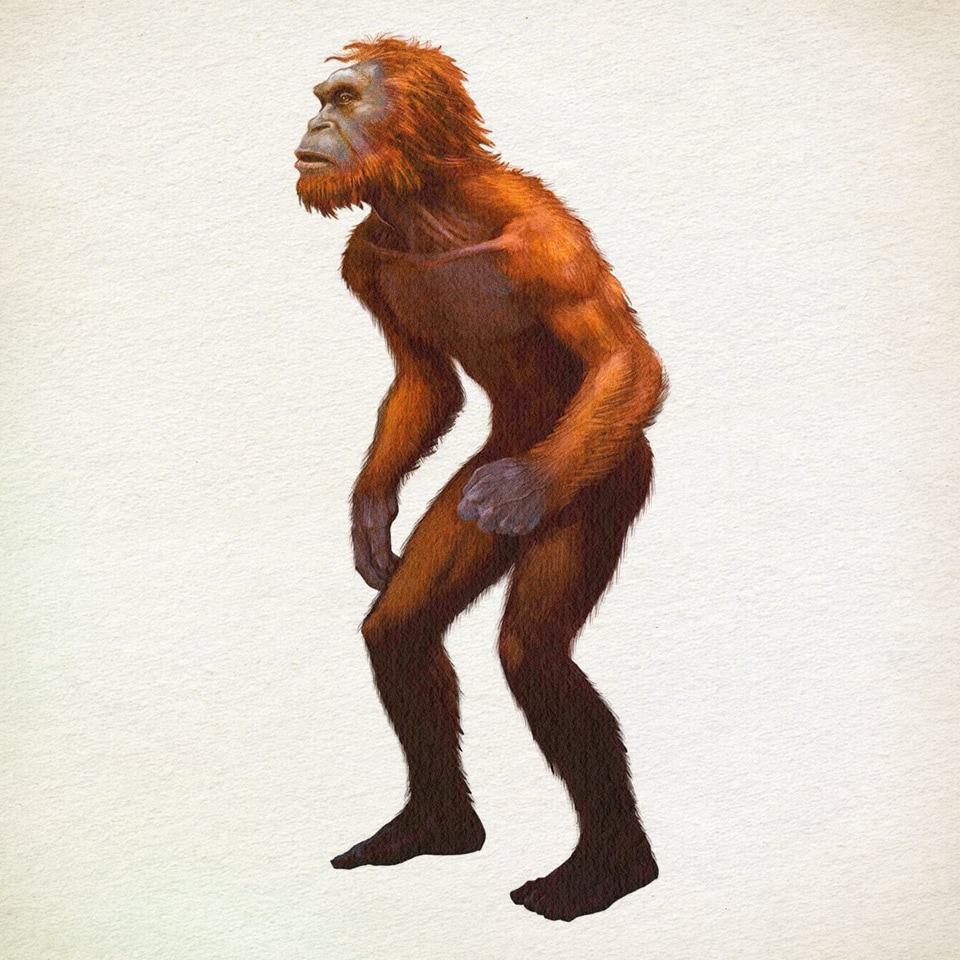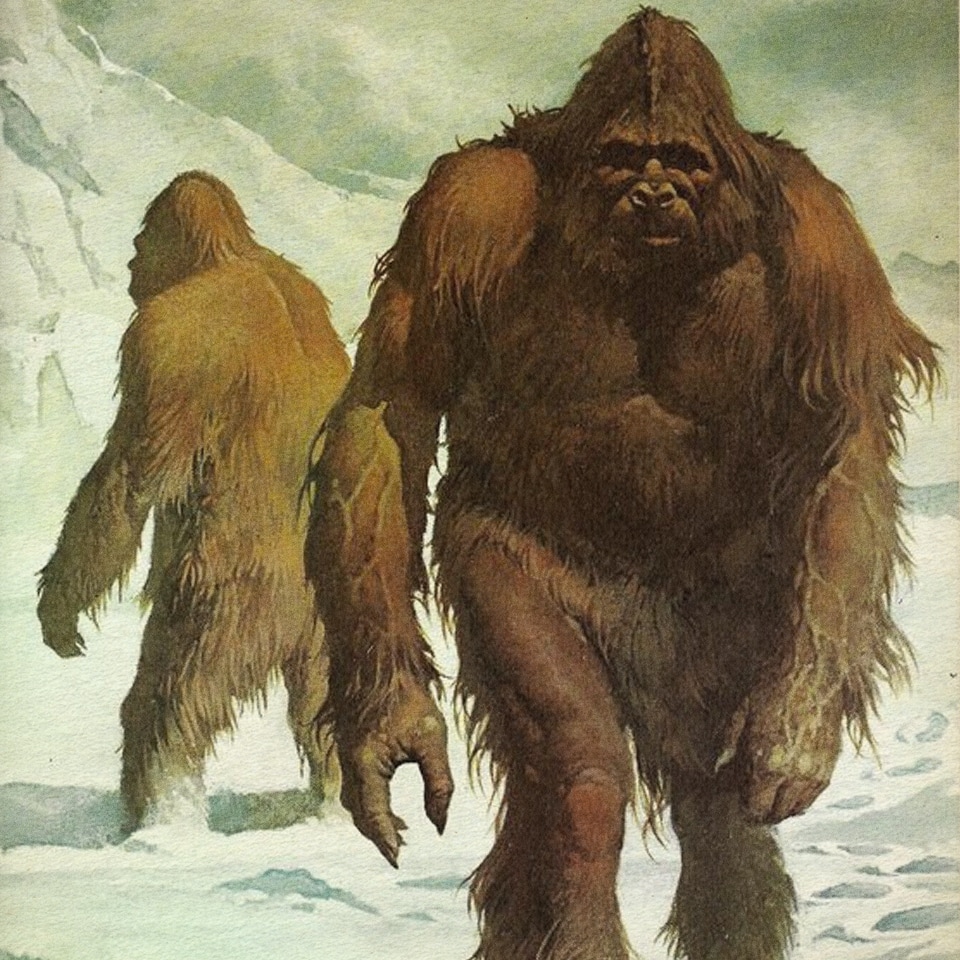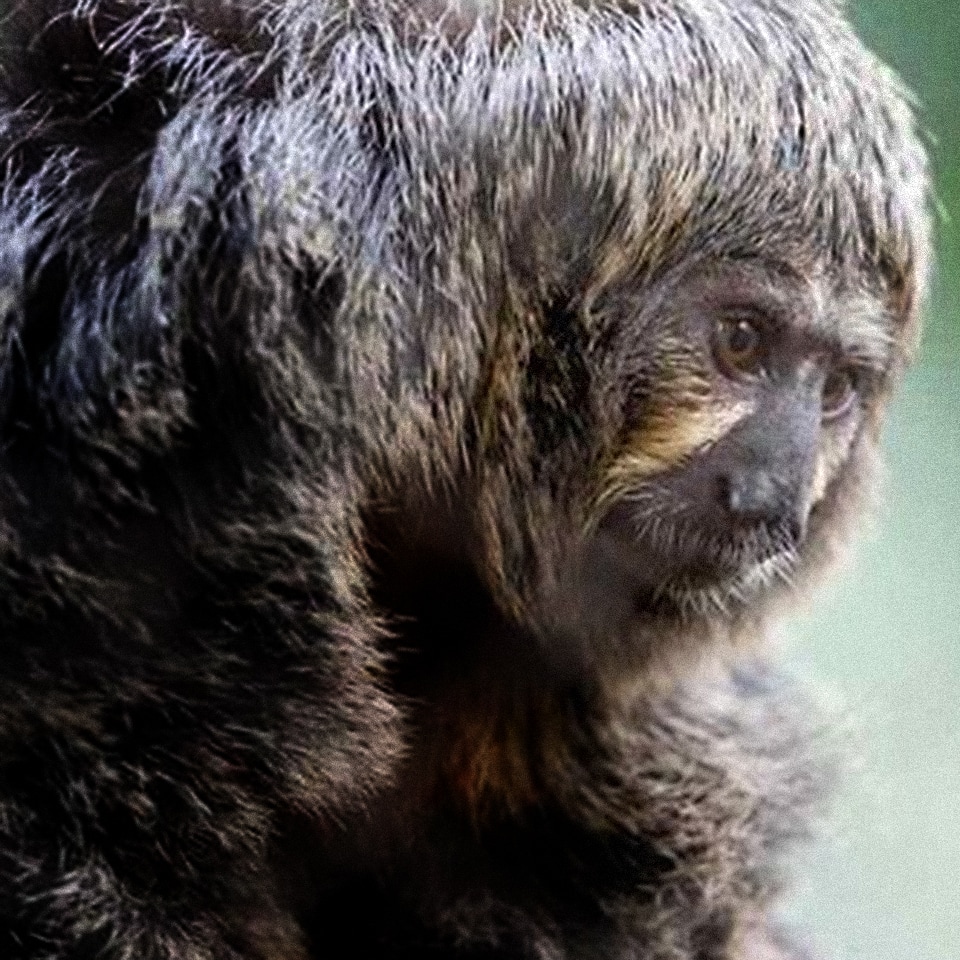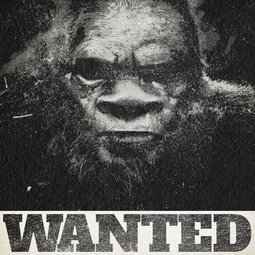Bigfoots?
BUT, I THOUGHT THERE WAS JUST ONE.
Well, that would be impossible. Living animals need a healthy breeding population, there couldn't be just one.
Well, that would be impossible. Living animals need a healthy breeding population, there couldn't be just one.
HOW MANY ARE THERE?
Unknown. Maybe 4,169. Guesses range from a mere 700 individuals to a whopping 100,000. The BFRO estimates 2000-6000 individuals (source.) There are good arguments for as many as 10X that amount. That sounds like a lot, right? Like we'd be swimming in bigfoot if there were that many. But…
Unknown. Maybe 4,169. Guesses range from a mere 700 individuals to a whopping 100,000. The BFRO estimates 2000-6000 individuals (source.) There are good arguments for as many as 10X that amount. That sounds like a lot, right? Like we'd be swimming in bigfoot if there were that many. But…
|
JUST FOR FUN
|
CONSIDER THIS
FACT: Mountain Gorillas: Average home range: 8 mi² (source) Neanderthal: Average home range: 20 mi² (source) Grizzly Bear: Average home range: 160 mi² (source) HYPOTHETICAL: If a troop of 4 bigfoot need a home range comparable to a Grizzly Bear's (160 mi²) Then a country like the U.S. with 2.3 Million mi² of undeveloped Mountain and Forest-land (source) would have enough land for 14,375 troops. That's 57,500 bigfoot. |
"It is very probable that the sasquatch population, being composed of animals with a long life span, few offspring, and little culling by predators will display wide physical variations, seen in such reported aspects as facial features, diverse coat colors, and the large variance in foot proportions." |
Bigfoot Types: The North American Variations
Nobody knows how many bigfoot there are but, there are more than one. There are enough bigfoot living in North America that different types are being reported. The reported types differ from each other, but are consistent across eyewitnesses.
Type 1 Bigfoot
|
|
Meet the Type 1 Bigfoot, also known as the Patty-type or the classic Sasquatch. Resembling a fusion of human and Mountain gorilla, it boasts a robust build, broad chest, black hair, and gray skin. Reported hair colors include brown, auburn, cinnamon, and occasionally white. Despite its massive head, it's described as relatively small for its body. Some Type 1s develop a sagittal crest, resembling a person in a hoodie.
Noteworthy features include a conspicuous brow ridge, a receding forehead, and eyes set deep, making them challenging to discern. The eyes, when seen, are reportedly proportionately wider apart than a human's. Type 1s exhibit a flat face, prominent cheekbones, a square jaw, and a slightly protuberant mouth. The nose, near-human in shape, can be "pug" or flat with forward-directed nostrils. Among this type, the average height is 7’ 10, with some reported at 9' or larger. The estimated weight of an average Type 1 ranges between 500-800 pounds. |
Type 2 Bigfoot
|
|
Enter the Type 2 Bigfoots—a more ape-like variation than their Type 1 counterparts. These creatures make appearances across North America, with a notable concentration in the Southern regions. Possessing a bestial, man-like build, Type 2s feature large eyes with expanded pupil dilation. The predominant hair color is often reported as black, though auburn, orange, and cinnamon have also been noted. Slightly smaller than Type 1s, with an average height of around 7 feet, Type 2s exhibit territorial behavior and a potential for aggression. Reports indicate a penchant for preying on livestock, particularly smaller varieties like goats and chickens. Their footprints resemble those of humans but can also evoke similarities to known primates, notably chimps, orangutans, and Bili apes. The top left illustration is Danny Vendramini's "Them and Us" Neanderthal The bottom left is a modified version of Danny Vendramini's "Them and Us" Neanderthal. Original Image courtesy of themandus.org | Copyright: themandus.org Original Neanderthal reconstruction courtesy of themandus.org |
Type 3 Bigfoot
|
|
Meet the elusive Type 3—a mysterious blend of mandrill and human, reminiscent of the drill. Similar to Bigfoot yet with a more primal aura, Type 3s exhibit diverse facial features, often portraying a sizable, dog/bear/baboon-faced bipedal mammal.
Type 3s can reach heights of 10 to 15 feet, boasting oversized heads with a more monstrous than ape-like appearance. Typically residing in mountainous areas, they descend in search of sustenance. Their fur, usually dark or deep brown, enhances their enigmatic charm. Notably, an account details a Type 3 adorned with animal pelts. While rare, claims of Type 3s consuming humans, rooted in ancient legends, exist. Reports occasionally delve into the paranormal, noting glowing red eyes or close-range bulletproof attributes. In Dogman Encounters Episode 85, an ex-military eyewitness seeks a bipedal canid but encounters a captivating Type 3 tale. "Type 3" is a recent classification, previously known as Kukwes or Gugwes in Mi'kmaq Indian folklore—an ogre with man-eating traits. Explore this classification further in this interview with Brian "Duke" Sullivan on Sasquatch Chronicles. |
Type 4 Bigfoot
|
Illustrations, clockwise from upper left: Troy Hitch. Original character design: Daniel Falconer. Sybilla Irwin. David Schlosser
|
Type 4 reports often originate from the North/Northeast and are alternatively known as Early Man Bigfoot or the American Almas. Among the hairy bipedal humanoids, they epitomize a more human appearance, exhibiting traits reminiscent of archaic or prehistoric man. Slightly leaner than Type 1s, they maintain a substantial, well-muscled build. Picture a hairy Homo Heidelbergensis as a reasonable model for Type 4, distinguished by less facial hair compared to other types. The crown of their head may exhibit thinning hair or even baldness.
Eyewitnesses describe Type 4s with beards and mustaches ranging from subtle to fully grown. Their heads are round, not conical, and feature hooded noses, wider mouths, and square, human-like teeth. Their skin appears pasty gray or black with a leathery texture. Some speculate on hybrid origins—part human, part novel primate. However, despite similarities, there are no reports of Type 4s utilizing tools, a behavior characteristic of all members of the genus Homo. This absence raises intriguing questions about their nature—if they are human, even pre-modern, why the apparent deviation from tool use? This paper by Aaron Mills, Gerald Mills, M. N. Townsend is an analysis of tooth marks found on piles of bones in the Mt. St. Helens area. They make an excellent case for the existence of an undiscovered extant Hominin. |
The Genoskwa
|
|
Descriptions of the Genoskwa vary, but common physical characteristics attributed to this cryptid include a large, hairy, and human-like appearance. It is often portrayed as more aggressive and menacing than other similar cryptids like Bigfoot or Sasquatch. Reports suggest that the Genoskwa may exhibit behaviors that set it apart from other hairy humanoids, contributing to its distinct reputation.
Accounts are often associated with the folklore and legends of certain Native American tribes, particularly those in the northeastern parts of North America. The Genoskwa is sometimes linked to Algonquian-speaking tribes, and stories about this creature are embedded in their cultural narratives. |
The Skunk Ape
|
Upper left illustration: Dhamindra Jeevan All others by David Schlosser
|
The Skunk Ape is a large hairy, bipedal mammal that calls the Everglades home. Castings of their tracks confirm they have four toes. Male Skunk Apes stand up to 7 feet tall and can weigh more than 350 pounds. Females are considerably smaller, standing 5 – 6 feet tall and weigh 180 – 250 pounds. Both male and female are covered with reddish-black fur.
Most confirmed Skunk Ape sightings report an individual animal however, increasing sightings reported claim to have seen several Skunk Apes traveling together. These groups also known as troops are becoming more common. Skunk Ape sightings are reported throughout Florida. It is estimated between 7 to 9 Skunk Apes live in the Everglades area. These sightings suggest the highest concentration inhabit the Florida Everglades. Big Cypress National Preserve offers the best opportunity for researchers to locate Skunk Apes. Often times Skunk Apes are sighted in close proximity of large cities. In one instance a Skunk Ape reportedly ran across I-75 in broad daylight. [Source: Dave Shealy. Skunk Ape Headquarters] |
Bigfoot Family Tree
Question: How can there be different types of bigfoot?
This is a way to visualize an answer to that question. It is just for fun and obviously not based on science.
This is a way to visualize an answer to that question. It is just for fun and obviously not based on science.
|
Idea: Within the narrative of primate evolution, significant gaps exist, conceivably harboring yet-undiscovered intergeneric and interspecific primate hybrids. Alternatively, these voids might shelter uncatalogued families, genera, or species, each showcasing a novel amalgamation of adaptations. Either scenario could yield a creature bearing resemblance to the commonly described types of bigfoot.
The Diagram: Positioned at the chart's base are the most frequently depicted types of bigfoot, with an ascent indicating a journey back in time. Illustrating fictional lineages, the diagram hypothesizes how modern descriptions might have originated. This conjecture is not grounded in physical anthropology, primatology, archaeology, or any other natural science discipline but draws inspiration from two existing concepts: |
1. Hybrids: Research suggests that hybridization can catalyze beneficial evolutionary changes. Initial interbreeding between parent species can yield individuals with a broader array of physical traits, fostering diversity within a population—a catalyst for natural selection. (Source: Bruce Bower, Science News, 2016)
2. Novel Adaptations: All primates share a common adaptive toolkit, but different tools emerge in response to varying environmental challenges. Over time, primates evolve based on the adaptive tools they employ. The term "novel adaptations" refers to previously unseen combinations of adaptive traits, such as bipedalism and hooded noses in a primate genus distinct from Homo. |
It's obvious, but I'll say it anyway: This chart is not based on science, it's just a thing I did for fun.
"Their heads were very ugly, not nice at all. They resemble a human face a little, but the nose is shorter and flattened. The eyes are slanted and reddish. The cheeks are very prominent. The lips are thin. The lower jaw is receding, as though cut on a bias. The entire body is covered with shaggy hair, resembling that of the buffalo. In some places this is long (torso, chest) and in other places it is shorter (arms, legs). The hair was very dirty. The stink was so strong that we could not stand it. " |
Bigfoot Types: Global
North America does not have the exclusive rights to large hairy ape-like beasts. They are reported all around the world, with the exception of Hawaii. Here is a quick look at some of the headliners.
|
ALMAS
Described as looking like humans, but with fur covering most of the body, the almas is a variety of wildman or bigfoot that is reported from the Altai Mountains in Mongolia and the Tien Shan Mountains in China. The body hair of almas is often described as curly, the jaws are large, and the eyebrow ridges are heavy. Visible areas of skin on the face, hands and feet are usually dark. The body hair is usually described as red or reddish-brown, sometimes as black. Most reports indicate an adult height of about five feet, but some describe a creature as tall as six and a half feet.
|
ORANG PENDEK
Reported from the island of Sumatra in Indonesia, the orang-pendek is described a red-furred bipedal ape-man about four feet tall. It is supposed to be attractive and graceful, and has been sighted by many natives. Westerners have seen this creature regularly since 1923, but numerous expeditions have failed to find anything better than footprints and hairs that don't test as any known creature. Some people think the orang-pendek is a new species of ground-dwelling bipedal orangutan, while others favor the idea of a very primitive human.
|
YETI
The Himalaya Mountains of Tibet and Nepal are the homeland of these legendary creatures. The two terms "yeti" and "abominable snowman" are sometimes applied to creatures from other remote areas of Asia as well. There are three species of Yeti. The dzu-teh for the biggest, hulking giants who sometimes walk on all fours and seem half bear, half ape, meh-teh for the "classic" yeti that stands about six feet tall and has a pointed top of the head, and teh-lma for the three-foot-tall frog-eating yeti that makes its home in steamy jungle valleys between mountains.
|
Sources
The first time I heard about the different types of bigfoot was on Sasquatch Chronicles (link). Tim Baker of Bigfoot Outlaw Radio (link) was a guest. He and Sasquatch Chronicles co-host William Jevning (link) covered the topic.
Below are the source articles for a lot of the information on this page. Sources for those articles and even more information can be found in those articles. For the record, I highly recommend listening to Tim "Coonbo" Baker, Jim "Bear" Grant and Matt Knapp on Bigfoot Outlaw Radio for Grade A Bigfoot information based on first-hand experience.
You can also find a metric ton of knowledge from Loren Coleman at Cryptomundo, Dale A. Drinnon at Frontiers of Zoology, and Jamie Hall at The Cryptid Zoo. I shit you not… you will be awed by the sheer amount of information they have generated.
Below are the source articles for a lot of the information on this page. Sources for those articles and even more information can be found in those articles. For the record, I highly recommend listening to Tim "Coonbo" Baker, Jim "Bear" Grant and Matt Knapp on Bigfoot Outlaw Radio for Grade A Bigfoot information based on first-hand experience.
You can also find a metric ton of knowledge from Loren Coleman at Cryptomundo, Dale A. Drinnon at Frontiers of Zoology, and Jamie Hall at The Cryptid Zoo. I shit you not… you will be awed by the sheer amount of information they have generated.
General Info
|
Sasquatch:Size, Scaling, and Statistics
by Wolf H. Fahrenbach ©1998 International Society of Cryptozoology
|
Habitat Defended versus Undefended Home Range Size of Carnivores, Ungulates and Primates Grant, Chapman and Richardson ©1992 Springer-Verlag
| |||||
Type 1 Bigfoot
|
The Cryptid Zoo: Bigfoot
copyright ©2006 by Jamie Hall
|
The Cryptid Zoo: Marked Hominid
copyright ©2006 by Jamie Hall
|
The Cryptid Zoo: Hairy Humanoids
copyright ©2006 by Jamie Hall
| ||||||
|
Bigfoot - From a Physics Point of View
| ||||||||
Type 2 Bigfoot
|
Q&A with Bear and Coonbo
|
The Cryptid Zoo: Giant Monkeys
copyright ©2006 by Jamie Hall
The Cryptid Zoo: NAPES
copyright ©2006 by Jamie Hall
|
The Cryptid Zoo: Skunk Apes
copyright ©2006 by Jamie Hall
Mysterious Hominoids
by Francois de Sarre
| ||||||||
Type 3 Bigfoot
|
Skunk Apes
by Dave Shealy
|
The Cryptid Zoo: Skunk Apes
copyright ©2006 by Jamie Hall
|
Evaluating Purported Sasquatch Photographic Evidence By Alton Higgins
| ||||||
Type 4 Bigfoot
|
Bigfoot: Caucasus Relic Hominoid -
"Almasti" Marie-Jeanne Koffman
Eastern Bigfoot Comparisons and
Identity by Dale A. Drinnon
|
Relic Hominoids in SE Asia
by H. Loofs-Wissowa ©2001
Eastern Bigfoot Portraits
by Dale A. Drinnon
|
The Sykesville Encounter
by Lon Strickler
The Cryptid Zoo: Marked Hominid
copyright ©2006 by Jamie Hall
| ||||||||||||

